A physics-informed deep learning approach for 3D acoustic impedance estimation from seismic data: application to an offshore field in the Southwest Iran
- PMID: 41233516
- PMCID: PMC12615643
- DOI: 10.1038/s41598-025-23611-w
A physics-informed deep learning approach for 3D acoustic impedance estimation from seismic data: application to an offshore field in the Southwest Iran
Abstract
This study presents a hybrid seismic inversion framework to estimate 3D acoustic impedance volumes in a geologically complex and data-limited environment. The approach integrates physics-informed pseudo-well generation, based on calibrated rock physics modeling and variogram statistics, with a deep feedforward neural network (DFNN) that maps multi-attribute seismic data to acoustic impedance while substantially reducing dependence on low-frequency background models and dense well calibration. The compact DFNN serves as a high-dimensional nonlinear mapper that learns the relationship between seismic attributes and impedance logs, a task for which it is well suited, leading to accurate predictions. We generated synthetic elastic logs (compressional and shear velocities, and bulk density) using calibrated rock physics modeling and variogram-constrained stochastic simulation to supplement real well logs. We produced a lithologically diverse and statistically coherent training dataset. This process, applied to only 3 real wells, generated a robust ensemble of 36 synthetic pseudo-wells, effectively addressing the severe data scarcity and providing sufficient training data. Seismic attributes representing amplitude, phase, and frequency characteristics are selected to facilitate the model's ability to resolve subtle geological heterogeneity. The trained DFNN is validated through a leave-one-well-out strategy yielding a cross-correlation coefficient of up to 95.4% and a normalized relative error below 1% when tested on the blind wells. Combining physical modeling with data-driven learning reduces reliance on low-frequency background models and dense calibration. Rather than replacing conventional inversion, it provides a complementary, geologically consistent, and computationally efficient approach for reliable reservoir characterization in offshore environments. Future work may focus on incorporate uncertainty quantification and volumetric convolutional networks to further improve spatial resolution and model reliability in complex subsurface settings.
Keywords: Acoustic impedance; DFNN; Pseudo-well generation; Rock physics modeling; Seismic inversion.
© 2025. The Author(s).
Conflict of interest statement
Declarations. Competing interests: The authors declare no competing interests.
Figures

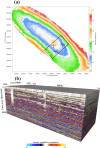




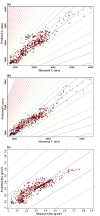


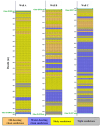
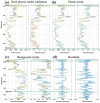
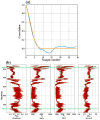




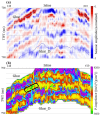
References
-
- Zhao, L., Nasser, M. & h. Han, D. Quantitative geophysical pore-type characterization and its geological implication in carbonate reservoirs. Geophys. Prospect.61, 827–841. 10.1111/1365-2478.12043 (2013).
-
- Dvorkin, J., Gutierrez, M. A. & Grana, D. Seismic Reflections of Rock Properties (Cambridge University Press, 2014). 10.1017/CBO9780511843655
-
- Russell, B. H., Hedlin, K. J. & N1-N14. Extended poroelastic impedance. Geophysics84. 10.1190/geo2018-0311.1 (2019).
-
- Moseley, B., Markham, A. & Nissen-Meyer, T. Fast approximate simulation of seismic waves with deep learning. ArXiv Preprint arXiv:1807 06873. 10.48550/arXiv.1807.06873 (2018).
LinkOut - more resources
Full Text Sources

